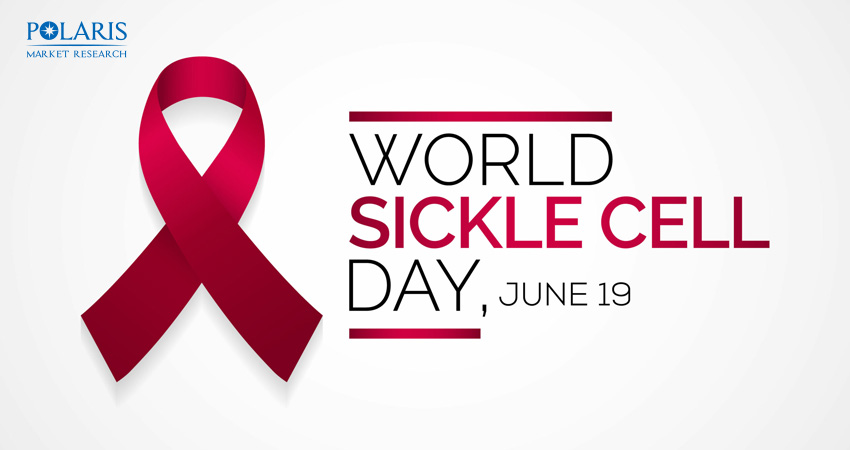Why Sickle Cell Awareness Matters Now More Than Ever?

Sickle cell disease is a complex genetic condition that affects far more than the bloodstream. It’s a lifelong challenge that shapes daily experiences, limits physical endurance, and demands constant medical attention. Affecting millions across Africa, the Middle East, India, and parts of the Americas, sickle cell disease is marked by episodes of severe pain, anemia, and increased vulnerability to infections. For many individuals, the disease brings frequent hospital visits and disrupted schooling or work life.
Fortunately, the complex condition is finally beginning to get the attention it deserves. With rising awareness and advances in gene-based therapies, the future of sickle cell care is evolving. In this blog post, we explain to fundamentals of this disease, covering its basics, symptoms, and types. Also, we shed light on how initiatives like World Sickle Cell Awareness Day are playing a crucial role in promoting early diagnosis and encouraging investment in research and equitable healthcare.
What Is Sickle Cell Disease?
Sickle cell disease is an inherited health condition that affects the red blood cells. By inherited, it means that the condition is passed down from the parent’s genes. Sickle cell disease is characterized by the abnormal production of hemoglobin. As a refresher, hemoglobin is a protein found in red blood cells that is responsible for the delivery of oxygen to the tissues. Individuals with sickle cell disease experience an insufficient supply of oxygen to the body tissues and organs.
Healthy blood cells are round and flexible, which enables them to move freely all over the body. In sickle cell disease, the abnormal hemoglobin form changes the shape of the red blood cells and makes them sticky and hard. These damaged red blood cells take a crescent shape and clump together. As a result, they get stuck in small blood vessels and cause a blockage in the blood flow. This stops the movement of healthy, oxygen-rich blood, resulting in pain and even damaged organs. While the primary effect is on red blood cells, SCD also has notable consequences for blood plasma.
Types of Sickle Cell Disease
There are various sickle cell disease types. The different types are based on the genes inherited by individuals from their parents. These include:
Hemoglobin SS (HbSS): HbSS is a severe form of sickle cell disease. In HbSS, both parents carry and pass on the HbS gene. This results in the individual having two copies of the mutated gene. HbSS can block small blood vessels, leading to pain crises, organ damage, and other complications.
Hemoglobin SC (HbSC): In this sickle cell disease type, the individual inherits one gene for hemoglobin S (HbS) and one for hemoglobin C (HbC). The genetic combination results in the production of both abnormal hemoglobin types. This causes red blood cells to become sickle-shaped and causes various health problems. While milder than HbSS, HbSC can still cause significant health issues and needs careful management.
Hemoglobin S (HbS) beta-thalassemia: Individuals with the form inherit both the sickle cell gene (HbS) and a beta-thalassemia gene. There are two main types of beta-thalassemia relevant to this condition: β+ (beta plus) and β0 (beta zero). The severity of HbS beta-thalassemia varies, with β+ thalassemia generally causing milder symptoms as compared to β0 thalassemia.
Symptoms of Sickle Cell Disease
The symptoms of sickle cell disease may vary from person to person. Common symptoms include:
Anemia: Anemia is the most common symptom of this condition. Having fewer red blood cells leads to anemia. Severe anemia can make individuals feel tired and dizzy.
Jaundice: Another common symptom of sickle cell disease is jaundice. Unlike regular blood cells, sickle cells don’t live longer and die faster than the liver can filter them out.
Pain Crisis: The crescent shape of sickle cells means they can get stuck when they move through small blood vessels. This can block blood flow and cause sudden pain anywhere in the body. The obstructed blood flow may also lead to tissue death.
Acute Chest Syndrome (ACS): ACS is a severe and potentially life-threatening complication of sickle cell disease. It is characterized by a new lung infiltrate, respiratory symptoms, and fever.
Celebrating World Sickle Cell Awareness Day
The World Sickle Cell Awareness Day was established by the UN General Assembly in 2008. Since then, the day has been observed annually on June 19. The day aims to educate the public about sickle cell disease, its impact, and the challenges faced by those affected by it. It also promotes advocacy, early detection, access to quality sickle cell disease treatment, and community empowerment.
The 2025 World Sickle Disease Day theme is “Global Action, Local Impact: Empowering Communities for Effective Self-Advocacy.” The theme focuses on working together globally while making a real difference in local communities. It aims to help people with sickle cell disease speak up for themselves and receive better care.
Sickle Cell Disease Management and Treatment
The cure for sickle cell disease exists in the form of a bone marrow transplant (stem cell transplant). The stem cell transplant needs a donor who is a healthy, genetic match. This procedure involves the patient receiving healthy marrow from the donor. However, only a small percentage of people with sickle cell disease have a compatible donor. In addition, there are complications and risks associated with the transplant.
The treatment for sickle cell disease can take the form of medications, transfusions, and gene therapy. The treatment may begin with antibiotics. New babies with severe sickle cell disease are given antibiotics twice a day until they are 5 years old to prevent infection. Healthcare providers may advise certain transfusions for treating and preventing complications. Researchers are also exploring gene therapy for treating sickle cell disease.
To Conclude
Sickle cell disease continues to pose serious health and social challenges worldwide. But with rising awareness, advancing treatments, and global advocacy through initiatives like World Sickle Cell Awareness Day, meaningful change is underway. Empowering patients through education and early care is key to improving outcomes.

